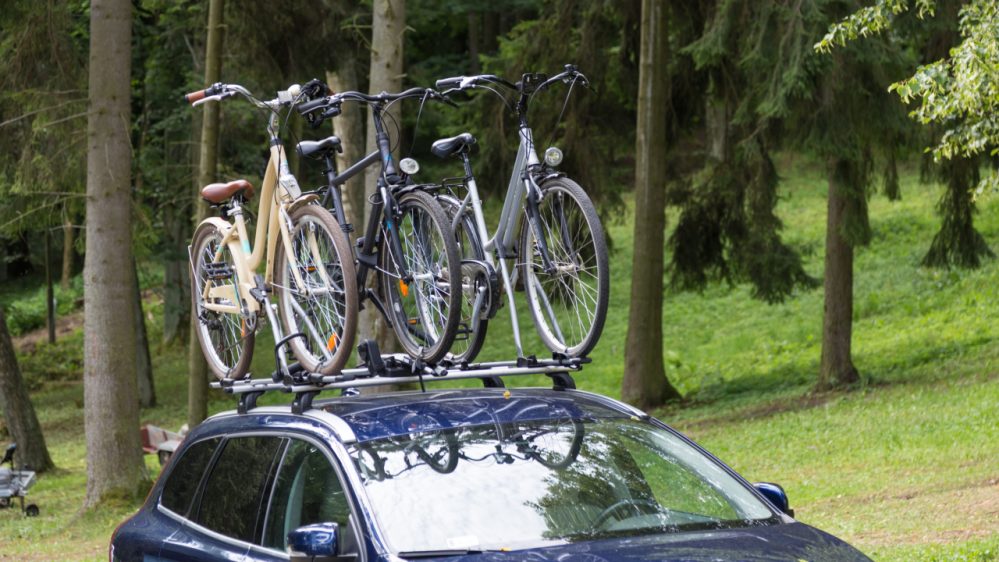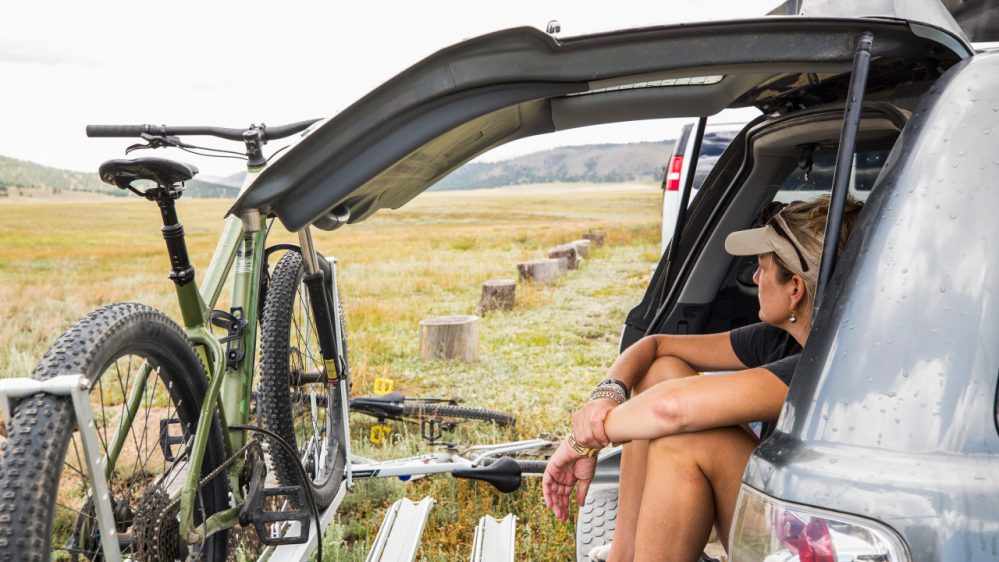Bike racks are worth it since they make transporting your bike by car a more comfortable task. They help you focus on enjoying the adventure ahead while saving you time from loading and unloading your bike from the car.
The racks can be easy or hard to install, depending on several factors, such as the type of rack or car. If you are unsure about how to install a bike rack, you are at the right place. The process might seem intimidating for beginners, but as with anything else, it will become easier once you try attaching a bike rack to your car.
How to Choose Bike Racks for Your Car
When choosing a bike rack for your car, you should consider a number of factors: price, stability, accessibility, vehicle compatibility, and security. We will explore some of these factors, so that you can decide what rack best suits your preferences.
Price
In general, high-quality hitch racks will save you a considerable amount of money. Comparatively, hanging racks are less expensive. Roof-mounted bike racks are costly and require lifting gear overhead, which may be difficult for some. Trunk bike racks are a little less expensive than standard hitch racks. They are popular among occasional users. However, if you want a top-notch experience, it is not advisable to take the cheap route.
Stability
The stability and capacity to stop the swaying of a rack are crucial. Maintaining stability when your vehicle is in motion at a fast speed is essential to safeguard both the car and the bike. Hitch racks are the most excellent solution if you want things to be stable and steady. Of course, a hanging and a platform hitch rack won’t provide the same stability. Hanging hitch racks offer more free movement, particularly in the more affordable range. Platform ones, though, don’t have much room for wiggling.
Car compatibility
The most crucial factor in picking a bike rack is ensuring it is compatible with your vehicle. SUVs vary in terms of whether or not they feature a trailer hitch. Consider purchasing a hitch-mounted bike rack if your car is equipped with one. This style of bike rack uses the trailer hitch to secure and stabilize your bikes behind the back door.
Trunk racks are far superior in this aspect. These racks mostly rely on straps, unlike hitch racks. Therefore, you won’t have to worry about taking accurate measurements. It’s also possible that one might employ their trunk racks with other cars without any problems.
However, cars still have a lot of unique characteristics. For instance, many trunk racks will have interference issues if the vehicle has a spoiler. In these circumstances, specialized trunk racks are needed to guarantee compatibility.
If you own a heavy bike and a car with a high roof, it is advisable to avoid roof bike racks simply because it can be challenging to put them up. Even if lifting the bike isn’t a problem for you, you will likely only end up limited to carrying two bicycles; that’s why a second rack might be necessary.
How to Install a Bike Rack
Depending on the type of rack, you might employ one technique or another to install a bike rack. It is not particularly difficult to install a bike rack on practically any car, truck, or SUV. So long as you get the right sort and adhere to the manufacturer’s directions to guarantee a decent fit, you will be set.
Roof-mounted bike rack

To start, verify that you have every component in the kit, then put the skewer in the opening on the front housing and tighten the nut. Secure the bike rack to the crossbars of your car. Place the roof rack onto the car’s crossbars and fasten the snit-skid plates to be parallel to the crossbars. The front crossbar should fit between the bike rack’s four front mounting screws. The rear crossbar should be between the two rear sliding screws.
Remove the front tire and secure the fork to the skewer by tightening it and shutting the lever for maximum stability. Insert the back wheel into the wheel holder, adjust the holder as needed for a good fit, and then tighten the wheel holder knob. Secure the back wheel with the ratchet strap. And in the end, double-check everything.
Trunk-mounted bike rack

A trunk-mounted bike rack often comes in one piece and requires no complicated setup, but you must follow the manufacturer’s installation instructions. A trunk bike rack often includes straps on the top, sides, and bottom. Open your SUV’s back door and wrap each strap around the edge of the matching side of the rear door. Adjust the rack so that the pads that rest against the door are centered. Then, adjust the slide on the buckle to tighten each strap.
Hitch-mounted bike rack

If your SUV already has a trailer hitch, installing a hitch-mounted bike rack should be simple. A hitch bike rack may be installed in a variety of ways. In most cases, you’ll attach it to your SUV by putting a pole into the trailer hitch opening and screwing a bolt through both the opening and the rack. Get another hitch rack under your vehicle and screw it vertically into the frame. To accomplish this, insert the bike rack into the hitch and align the bolt hole with the aperture in the frame. Then, tighten the bolt using a socket wrench.
Conclusion
Installing a bike rack on a car is no rocket science, and it is unlikely you will need pro help from someone once you’ve figured out how to do it.
Getting your bikes in the car to enjoy a day out exploring places on two wheels does not have to be an inconvenience anymore. Those days of trying to fit bikes in a trunk or on the back seats are over. A bike rack will give you this sense of ease because you won’t have to worry about ruining your car’s interior or endangering your bike’s safety. Transporting a bike has never been so easy! And this is precisely how we want you to feel.




